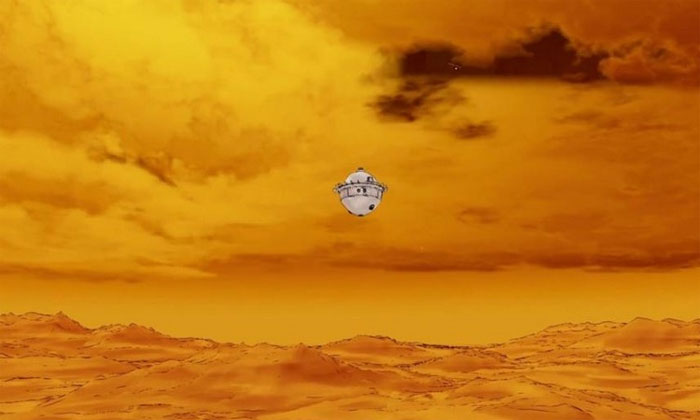NASA has shared a new video simulating the DAVINCI mission and the scientific research that the spacecraft will conduct on Venus, the most inhospitable planet in the Solar System.
The DAVINCI mission spacecraft descends through the harsh atmosphere of Venus. (Video: NASA)
This spring, NASA announced that it is developing two new missions to explore Venus in the early 2030s. One mission, named VERITAS (Venus Emissivity, Radio Science, InSAR, Topography, and Spectroscopy), will orbit and observe through the planet’s thick cloud cover. The other mission, called DAVINCI (Deep Atmosphere Venus Investigation of Noble gases, Chemistry, and Imaging), will take it a step further by sending a high-tech probe to descend directly through the atmosphere of Venus.
Scheduled for launch in 2029, the DAVINCI mission consists of two parts. First, the main spacecraft will fly two orbits close to Venus to study the atmosphere and the planet’s dark side. The atmospheric study will focus on observing how clouds change over time and identifying a mysterious chemical that absorbs ultraviolet light. Meanwhile, the dark side study will map the surface using infrared light emitted by rocks releasing heat absorbed during the night. Scientists hope the data will help them better understand how Venus’s strange highland regions were formed.

NASA simulates the DAVINCI mission.
Seven months after the two flybys, the probe will descend through the clouds for one hour, transmitting data along the way. While the main spacecraft monitors, the probe will detect the composition, temperature, pressure, and wind speed at each layer of Venus’s atmosphere. Through all this data, the NASA research team will not only gain a clearer understanding of present-day Venus but also piece together its history regarding whether this planet ever had water.
As it approaches the surface, the probe will capture high-resolution images of an area known as Alpha Regio Tesserae. The surface of Venus contains many tesserae, where rocks are continuously fractured and folded, similar to processes occurring deep within Earth’s crust. The probe will help researchers visualize the experience of standing on the surface of Venus.
Venus’s atmosphere is 100 times denser than Earth’s, consisting of 95% carbon dioxide (CO2). The surface temperature of Venus exceeds 470 degrees Celsius, hot enough to melt lead. The air pressure is equivalent to the pressure found at a depth of one kilometer in Earth’s oceans. “Venus has acid clouds instead of water vapor clouds. The frightening thing is that you have to go through it to reach the planet’s surface. The environment here is extremely harsh, like hell on Earth,” described Gustavo Costa, an American scientist specializing in chemistry and materials, on Business Insider.

















































